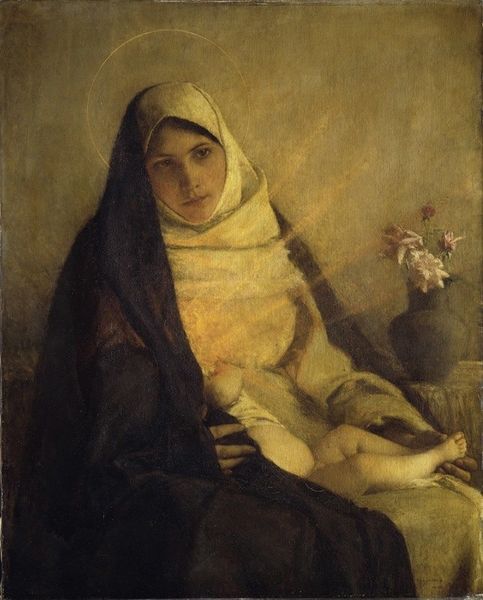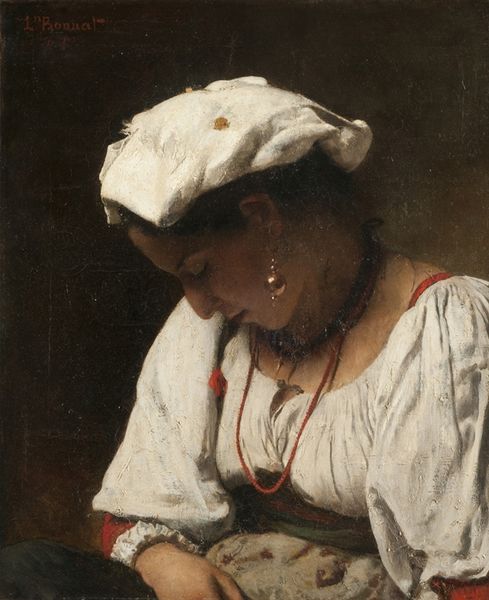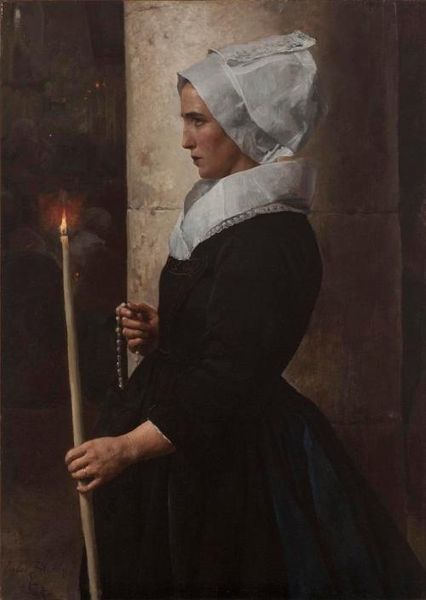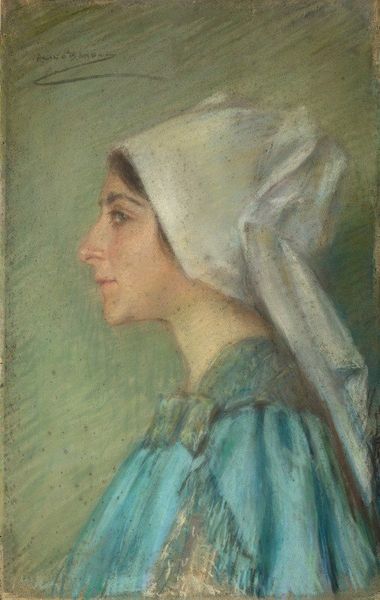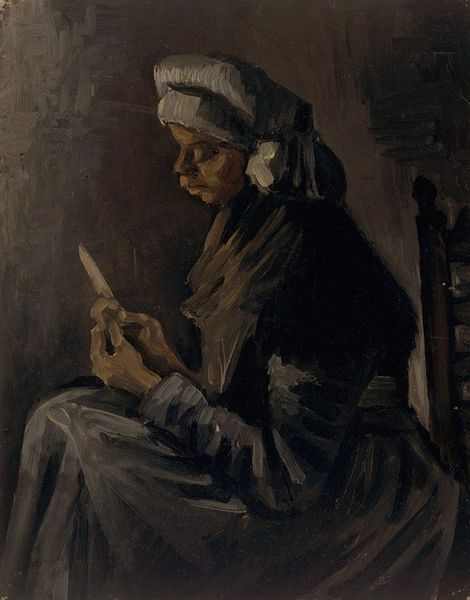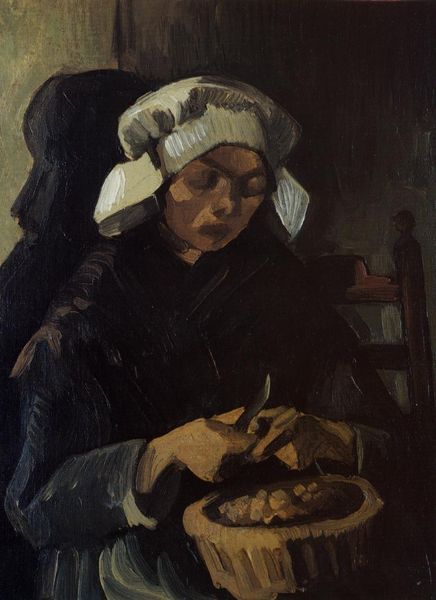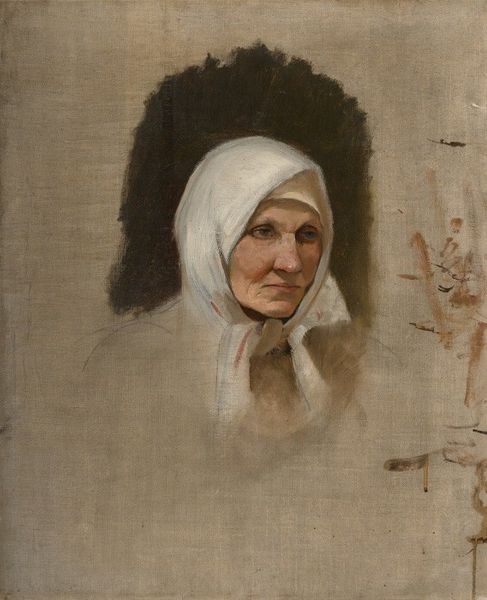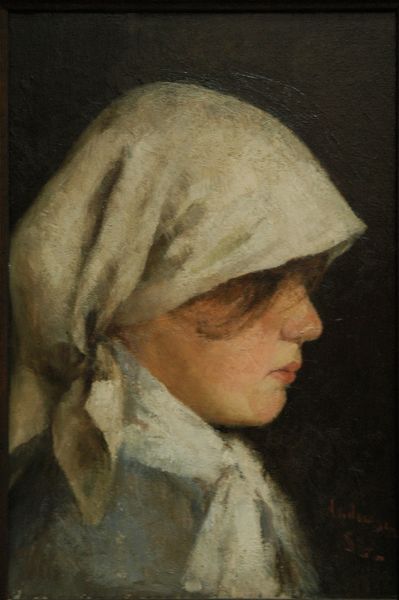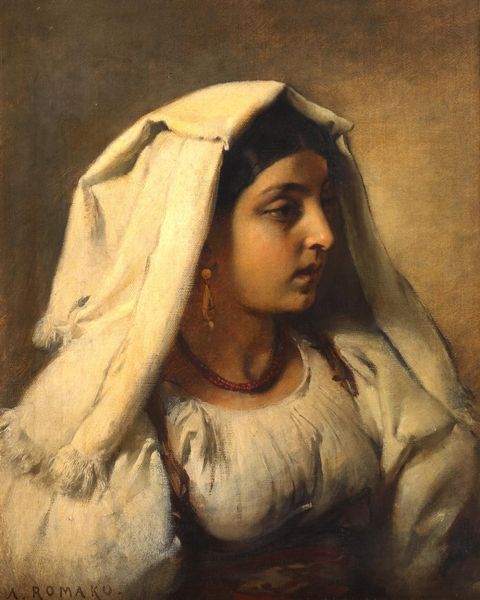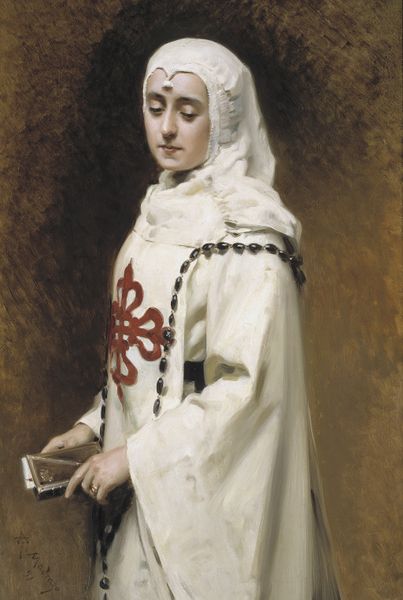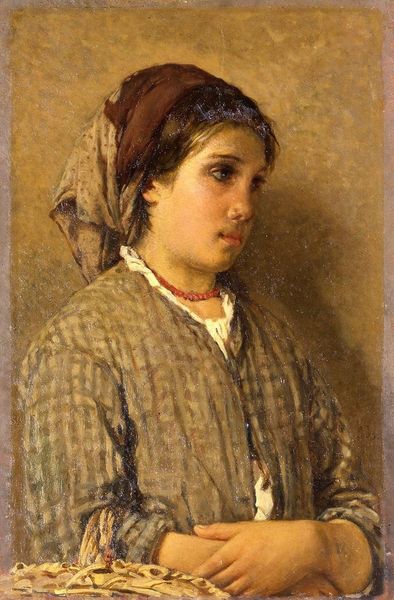
Copyright: Public domain
Curator: I find myself drawn to the solemnity of Jules Breton's 1869 painting, "Breton Peasant Woman Holding a Taper". The woman's quiet dignity radiates even from the muted canvas. Editor: My immediate thought is that this is all about the wax! Consider the textures, the different techniques used to give this image materiality – the rough fabric of her dress against the smoothness of that thin wax taper. Curator: Absolutely. The taper is both practical and powerfully symbolic. Candles often represent hope, faith, or remembrance of the dead – prevalent symbols in Romanticism and Realism, which influence the image, along with narrative and historic genre elements. Breton was incredibly skilled at weaving deeper emotional and spiritual meanings into seemingly straightforward portrayals of rural life. Editor: It's a history that hinges on light itself, both literally and figuratively. Wax was essential for daily life, yet the way its production impacted the landscape, requiring raw materials and labor, often gets overlooked in favor of symbolic readings. How was this taper *made*, I wonder? Who made it, and from what? Curator: A very grounded perspective. The woman herself is such a compelling symbol of enduring strength. Consider her Breton cap; it marks regional identity but also suggests a timelessness, doesn’t it? Breton clearly evokes this sense of rootedness, the peasant as a connection to ancestral lands and traditions. Editor: The clothes are very interesting for other reasons. Note the details rendered: this coarse woolen cloth signifies practicality; it's clothing intended to survive difficult conditions. Breton focuses so much attention on the real, material conditions of everyday life! It's this kind of painting that begs me to ponder the social status of the artwork and of its sitter! Curator: You bring up crucial point. It's impossible to ignore how Breton's background allows the portrait to explore issues surrounding economic disparity, labor, gender. The visual of this modest scene in painted canvas reflects some key questions to a wider, presumably wealthier audience: about our connection to landscape and history. Editor: Right, a painted history lesson dependent on materials, from pigment to textile. A real feast for materialist inquiry. Thank you for guiding me in our discussion. Curator: My pleasure! I appreciate you lending us your understanding to consider how material, context, and cultural symbols converge.
Comments
No comments
Be the first to comment and join the conversation on the ultimate creative platform.
